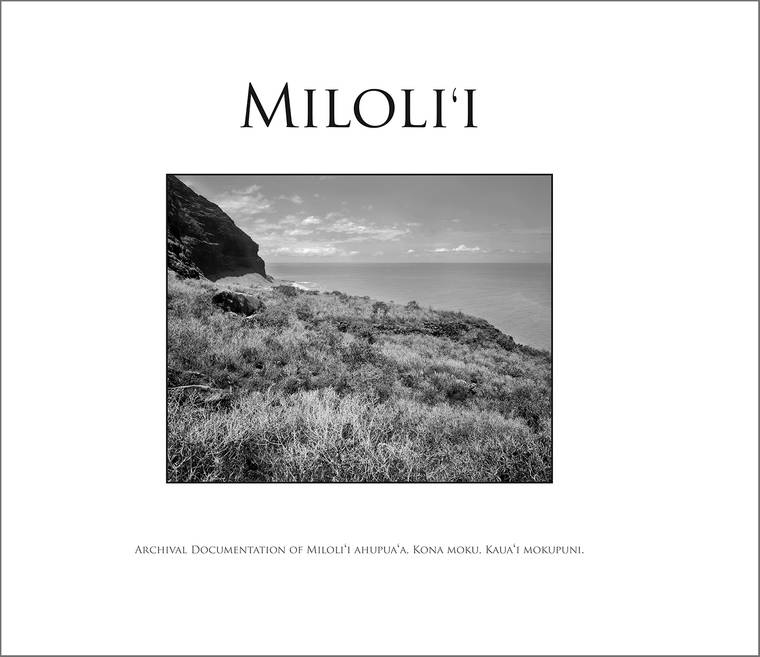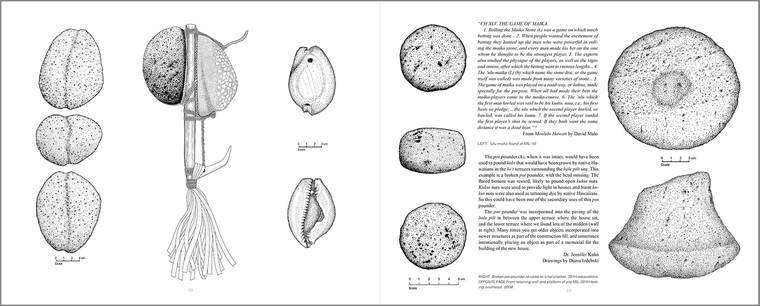Kauai’s Timothy De La Vega has been documenting the sites of the Kanaka Maoli for almost 30 years. His book, “Miloli‘i,” is the first on the ahupuaʻa (land districts) of the Napali Coast State Wilderness Park.
“This book is a combination of the large format documentation along with archaeological work/writings and voices from the Hawaiian language newspapers of the 1850-1930s,” he wrote.
He credits his co-writers, Alan Carpenter, Dr. Jennifer Khan, Summer Moore, Myra Tomonari-Tuggle and Dr. Keao NeSmith, who translated the Hawaiian and did most of the research into the newspapers.
In their research, he said they rediscovered many things about Miloli‘i “that had totally been forgotten.”
“This book is for those that love the Napali and love Kauai culture and history,” he said.
The hardbound book has 144 pages and all information is sourced with an extensive bibliography. It is described as the “archival documentation of Miloli‘i, Ahupua‘a, Kona Moku, Kauai Mokupuni.”
In the foreward, Carpenter wrote: “We ask that if you are graced with the privilege of visiting this storied place, that you do so with the utmost respect for its long history. Do so with the awareness of the critical role it plays in protecting one of the most complete records of traditional Hawaiian settlement in existence in preserving critical habitat for endangered species, and the reverence that Native Hawaiians hold for Napali today.”
Though De La Vegas has done it, this is not a book of beautiful color photographs. While it does have outstanding black and white photography, much of it is of sites of historical and cultural significance. It is more a book that combines scientific research with people and the land and presents it in Hawaiian words, translated to English, and drawings and pictures.
“I wanted to do something that combined the legends, the story of the Kanaka Maoli, as much as we could research and bring back,” he said.
“So really, it’s my photographs with the scientists in their words,” he said.
He did rewrite those reports to make it a bit more understandable to the average person.
“I have a hard time with a lot of scientific journals,” he said. “They’re wonderful, but for a layman, they’re kind of tough.”
De La Vega, who did the layout and design of the book, is an architectural engineer, custom home builder and renowned photographer. In 2018, one of his photographs was used on a Forever stamp depicting the Napali Coast. The stamp, which featured a sunset image of crashing waves against the Napali coastline, was part of the “O Beautiful” sheet of 20 Forever stamps.
He notes when he travels, he tries to find everything he can about the culture and history of each place he visits. “Miloli‘i” provides just that about Kauai.
“For that, I’m really super proud,” he said. “Really, this is everyone’s book. Everyone who worked on this, this is all of our working together.”
It is not a book that is going to make much money, but it is one De La Vega believes needed to be done.
He is planning presentations on the book and its findings this spring and summer.
Miloli‘i is available at the Kauai Museum and at www.TimDeLaVega.com






